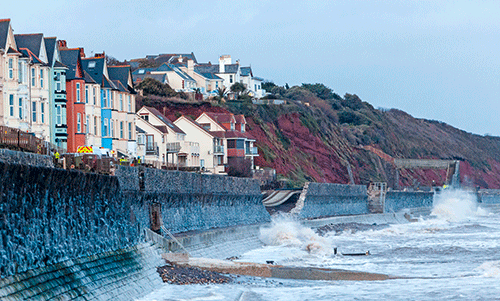 Read the peer review for this article
Read the peer review for this article
Britain’s weather is changing - that’s a fact. And the railway will have to change in response. The impact will be gradual, but the cost will be staggering.
The railway will have to withstand the effects of increasingly extreme weather associated with climate change projections. Warmer, drier summers and more intense periods of winter rainfall are anticipated.
Some aspects are already measurable. Near Southampton, the sea level has been rising by 1.5mm a year since data collection started in 1935. Annual rainfall and average temperature have both increased noticeably in the past 30 years.
On the railway, it can be detected in Network Rail’s increasing Schedule 8 payments to train operators for disruption. Over the past eight years the average annual cost attributed to weather was more than £50 million. Following a change to the rate of compensation payments, from now on it is expected to rise to £80m.
Performance cost, repair cost and wider economic cost all underline the need for enhanced spending to increase weather resilience.
“It is key that we take a long-term view,” says Rob Nicholls, Professor of Coastal Engineering at the University of Southampton. “Over the next ten to 20 years the risks to the railway will grow a little bit. But it is not going to be a dramatic change.”
Network Rail expects the railway between Folkestone and Dover to remain closed until December 2016, after winter storms cracked the protective sea wall and undermined the base of the railway last Christmas Eve.
Repairing it with a 235-metre concrete viaduct, supported on columns sunk into the beach and protected by 90,000 tonnes of rock, will cost £44.5m. That money was not planned for in Network Rail’s budget.
At Dawlish, Nicholls suggests that “raising the rail bed a little may be sufficient for our working lifetimes. Beyond that something more substantial will be needed.”
He adds: “In most cases we are going to want to stay put, upgrading the resilience of the railway to withstand bigger waves and higher tides. That should cover a 30- to 40-year timeframe. Further ahead the risks are very much larger.
“At the low end of predictions, sea level will rise at its present rate. That is 20cm to 30cm over the next 100 years. In the higher scenarios, a one-metre rise is clearly plausible. Two metres is unlikely, but not impossible. And clearly the cost difference in planning for different levels is very large. The trouble is, the long-term view is often lost in the immediate need to react to day-to-day situations.”
At Dawlish, a 2014 study by the University of Southampton found that by the end of this century the annual number of days with line restrictions will rise from today’s ten to between 84 and 120. This will include major disruptive events each year that could result in lengthy line closures.
A 2010 study similarly concluded that the sea level rise could cause rail services through Dawlish to be disrupted on average for 35% of the winter by 2060.
Inland, it is suggested that the April 2016 landslip at Wrecclesham (near Farnham) was influenced by climate change. A clay embankment on the line to Alton became saturated with water and slipped towards the river flood plain. Vegetation on the slope was unable to maintain stability as the pores in the clay filled up.
The line was closed for weeks. Buses replaced trains while a temporary fix using steel piles was prepared. A more permanent solution is expected to take months and cost millions of pounds.
“During routine maintenance we discovered a small landslip on April 6,” says Network Rail spokesman Ross Easton. “We monitored it over two days and imposed a speed restriction of 5mph. It then became quite severe. At its worst point it dropped by six feet.”
Some 250 metres of track were lifted, and steel piles were inserted where the track previously lay. The line was then slewed to the far side of the embankment, like a chicane. Rail services resumed in early May at low speed, pending further work.
The railway is aware of the challenges. The RSSB has a research plan called Tomorrow’s Railway and Climate Change Adaptation (TRACCA), led by consultant Arup. It has published reports over the past three years, and its final conclusions were published just before this issue of RailReview went to press (see page 62).
These reports state that it is not possible to link individual consequences of extreme weather explicitly to climate change. But the events form a pattern that is consistent with predictions of the effects of a changing climate.
The climate predictions
■ Under a ‘medium’ climate change scenario, by 2080 summer mean daily temperatures will rise by up to 5.4°C in southern Britain and by up to 2.8°C in the North.
Winter rainfall will increase by 33%, but summer rainfall in the South will decrease by 40%. The number of lightning days will increase throughout the year.
■ Cold conditions affecting the railway are projected to decrease by the 2040s (but not cease altogether), with the number of winter days of temperatures below 0°C falling by around 45%. It is estimated that disruption due to ice and snow, including freezing of points and ice formation on the third rail, could fall by more than a third by 2080.
There could be fewer slips, trips and falls due to ice for passengers and workers. Slips, trips and falls currently account for 47% of all safety risk to passengers, according to RSSB.
■ Inundation by the sea is expected to rise in line with the increase in sea level and from increases in storm surge levels.
■ Rainfall will increase by a third in the west (particularly in winter), but by less in the east.
■ River flooding is anticipated as rainfall increases, leading to increased scour of bridge foundations, embankment damage and culvert washout. The number of very wet days will rise by up to 30% by the 2040s.
■ There have been 12 derailments since 2005 as a result of earthworks failure following heavy rain. There were an average of 64 earthworks failures per year during 2006-2012, but better processes have since led to a reducing trend, according to RSSB.
■ More wind gusts above 70mph are predicted. This has implications for track disruption and speed restrictions as a result of tree falls, more intense leaf fall and excessive wind loading on structures.
■ The number of days where speed restrictions are applied because of heat is expected to increase by a factor of between four and seven by the 2040s, in different RSSB estimates. Network Rail estimates a ten-fold increase in rail buckling and misalignment problems by 2080. There have been only two derailments due to track buckling since 2003.
■ The number of days in which overhead line equipment sags to an unacceptable extent is expected to increase by a similar amount.
Increased heat would also lead to an unquantified increase in earthwork failures due to desiccation. An ATOC study found that train reliability starts to decrease above 25°C.
■ Heat stress on both staff and passengers will result from these changes, and there will be strain on air-conditioning systems. There have been four occasions in the past ten years when passengers have forced doors open on overheating stranded trains, leading to RAIB investigations. There is unquantified evidence that higher temperatures lead to increased alcohol use by passengers, resulting in more aggressive behaviour, slips, trips and falls.
■ Network Rail calculated that there were an average of 1.6 million weather-related delay minutes a year between 2006 and 2014. That equated to more than £400m of weather-related delay costs over the same period - £51m a year.
Regional approach
“At a high level within Network Rail I think there is good awareness of the issues,” says William Powrie, Professor of Geotechnical Engineering and Dean of the Faculty of Engineering at the University of Southampton.
“Getting that message out to the routes to implement it seems to be a challenge. Making sure the resources are available is also a challenge.
“And trying to educate the public is still a challenge - getting people to understand the impact of climate change, but also to understand that it is not an exact science. We are inevitably talking about levels of probability.”
Network Rail has devolved responsibility for managing climate change to its regions. As it plans for the accounting period from 2019 (Control Period 6), each route will bid for a set of interventions to meet its local needs.
“The response and context is different across the country,” explains Mike Gallop, Director of Route Asset Management (Western) for Network Rail.
“There have been some substantial events in the recent past in my area which can be attributed directly to climate change. The challenge we face is around flooding on the Somerset Levels, the coastal flooding around Dawlish, and on the Thames at Oxford.
It is different for London North West, which has the Settle-Carlisle problem where half a hillside is moving. My colleague at London North East has the Peterborough Flats, and my colleague in Anglia has a different set of challenges again.
“On Western we are a special case. In response to the catastrophic events in 2014 the Government effectively gave us £31m to spend on a series of targeted interventions. We now need to build on that. A regional response is rational. It recogises geography, geomorphology and geology, and different climate challenges.”
Gallop says major coastal improvements are required between Exeter and Newton Abbot. On the Somerset Levels the work is about mitigating (but not preventing) flooding of the tracks. At Cowley Bridge (near Exeter) an additional culvert is being built and weirs on the River Exe and River Culm are being removed. And this July a 16-day closure of the line between Didcot and Banbury will enable an £18m project to lift the railway 1.5 metres higher above the flood plain of the Thames, installing two large culverts. This should increase protection from what Gallop describes as a 400 metre-long puddle.
Downstream at Maidenhead, Gallop has already moved signalling equipment clear of occasional trouble. In 2014 high ground water levels severed the Great Western Main Line for several days. Signal cabinets have now been lifted on stilts to stand four metres higher than before.
“What we are doing is buying resilience,” he says. “We are not buying prevention. Between Exeter and Newton Abbot we are looking at resilience for the next 150 years.
“We have employed world-class consultants from HR Wallingford. We have taken advice around the Government’s climate change agenda and we have conformity with how the rest of the UK is planning to ameliorate climate change.”
What To Do Next?
Professor Powrie’s particular expertise lies in the study of railway embankments and cuttings. He says the landslips at Harbury (on the Chiltern route) and more recently at Wrecclesham, are “probably” evidence of the impact of a changing climate. It’s not possible to blame individual specific events on the weather patterns, he warns. But the increasing frequency of landslips suggests a relationship.
“Embankments and cuttings are having to handle patterns of weather which are much wetter than in the past. To do anything about it, such as improving the drainage, is incredibly expensive.
“Embankments on clay are key. If you leave trees on them you get a cycle of shrinkage and swelling. If you take the trees away you get a gradual rise in the pore water pressure. If the water pressure is too high you get a potentially major slip… as we have seen in recent winters.
“The downside of trees is that they blow down in front of trains. They cause leaves on the line. But the upside is that the roots of the trees are effective in taking moisture out of slopes, and that will help with stability.
“In a normal weather pattern we can do enough to make sure that a bank remains stable, leaving trees over the top or bottom third of a slope. The question really is whether you try to make the embankments resilient enough to stand a 1-in-50-year event, or a 1-in-100-year event.”
NR’s Mike Gallop responds: “Every day I fund vegetation clearance and drainage improvement. We manage in a sustainable way for condition and performance, rather than for ecology. I have 15,000 earthworks on the Western route. Each has an inspection regime relevant to its risk. This is the asset register of our embankments.”
But does his vegetation management take into account future climate change?
“No. We don’t at the moment. But where embankments are renewed or where we have a slip, we design to modern standards. Within that is a higher safety factor reflecting an element of future-proofing for rainfall and flooding. We are becoming wetter, so we are increasing the size of culverts and drainage ditches.”
Powrie sees damage to the Lamington viaduct on the West Coast Main Line as further evidence of climate change. It took Network Rail seven weeks to repair the bridge over the River Clyde, where scouring by flood water came close to a catastrophic destruction of the foundations last Christmas. It was described as “a race against time”, with the river flow diverted so that engineers could install new steel bearings and a concrete plinth.
Says Powrie: “Add it all up: scour from rivers, effects on slope stability, vulnerable coastal sections, expansion and contraction of the rail leading to buckling in hot weather - there are lots of significant impacts and you can see them right now. Most years the railway will be OK, but in some years it will be caught out.”
A 2014 review of transport resilience by the Department for Transport noted that most railway earthworks were hand-built by the Victorians, and poorly engineered by today’s standards. It identified the 11,300 miles (18,200km) of embankments and cuttings as a particular risk. Some 105 earthworks failed in the winter of 2013-2014, some of them resulting in lengthy line closures.
The review concluded: “It would be both very difficult and prohibitively expensive to ensure total physical resilience, so it is equally about ensuring processes and procedures to restore services and routes to normal as quickly as possible after extreme weather events have abated.”
The 2015 Harbury landslip closed a route used by 50 freight trains and 80 passenger trains each day.
“I’m not sure whether we have given up on mitigation,” says Powrie. “In terms of trying to stop it from happening, we must continue to encourage people to travel by rail rather than by road, because that is better for the climate.
“But we have to accept that a considerable degree of climate change is inevitable, and therefore we must be talking more about adaptation. People will have to be more tolerant of the consequences when there is an extreme event that disrupts the railway.
“You can only go so far to make the railway climate change-proof. You have to accept that in an increasing number of circumstances there will be restricted speed running and sometimes a suspended service. That is just an economic fact of life.”
Powrie explains: “Quite often now the railway is protecting other infrastructure. In the meadows south of Oxford, the railway is really acting as a barrier between flooded fields on one side and a housing estate on the other. Dual-purpose infrastructure which is both more resilient and which is potentially a flood defence or a means of water storage - that is something we can work on.
“Another example is the overhead line equipment. A problem with the Great Western modernisation has been specifying modern, chunky masts that attract more wind, ice and snow. That has required increased foundation size to take the weight.
“Much can be done around reducing the environmental loadings on structures to give economy. The trick is to make those structures more climate-proof. That does not mean making them bigger - bigger attracts greater loads. We have to make them cleverer - more aerodynamic and therefore unable to accumulate ice and snow. We need to be thinking about that now, and it has not been thought about on the Great Western electrification project.”
Fourteen leading academic institutions have joined the Government-funded UK Collaboratorium for Research in Infrastructure and Cities. As part of that, the University of Southampton is building a £40m National Infrastructure Laboratory that will develop, test and prove new designs. This could include bridge piers that resist scour or greater water velocity, or novel forms of track or structures that are more resilient to changes in climate.
Joined-up Thinking
“Whenever Network Rail does routine maintenance, what it puts back is going to be subject to more extreme cycles of climate than it had before,” says Powrie. “It needs to upgrade as it goes. As with speed restrictions in hot weather, it has to agree a balance between cost and acceptable disruption.
“There is an ambition to predict the effects of a forthcoming storm. We are some way from that. But this is partly about linking up current knowledge. It is about understanding what a particular weather pattern will do, and understanding how the infrastructure will perform against that.
“It is about combining separate knowledge areas to understand how complete systems work together - for example, how transport corridors double as flood routing measures in conjunction with the waste water infrastructure.”
Gallop responds: “We speak the same language as other asset owners and regulators. We talk in terms of return periods - that is the currency the Environment Agency uses for flooding. It is about a common language, so we know what we are buying, what benefits we get, and also understand what we cannot do. We cannot stop various changes, we just have to accommodate them and get used to them.
“We are now being impacted by the start of what appears to be pretty significant change. The rainfall pattern is shifting. For perhaps 11½ months of the year we do not need to meet high rainfall resilience. But for two weeks we do. Structures, earthworks and drainage all have to meet that two weeks.
“The cost of weather in train delays has been in excess of £30m on the Western route over the past two years. That’s not the cost of putting it right, it’s just the cost in payments to train companies for disruption.
“The commercial mechanisms we face are causing us to design differently. The punitive costs from embankments slipping or flooding, or signalling being submerged, are very large.”
Who Picks Up The Bill?
Where the railway acts as a flood defence, Network Rail has to work alongside the Environment Agency.
“Do I pay?” asks Gallop. “Does the Environment Agency pay? EA’s business model means it can only develop a case against flooding to domestic properties. Not railways. Not electricity substations.
“The utilities - and I include Network Rail - are exposed to significant future costs. As a nation, we need to rationalise how those costs are going to be picked up. Will the consumer pay? Does it go on your rail fare, your water rate or your electricity bill? Or is the Government going to do things differently?
“To be blunt, the Government is sitting on its hands and giving no direction at all, beyond saying it is a matter for the Environment Agency and the utilities. Of course it isn’t - flooding due to climate change is a national issue.
“Flooding at Hinksey affects all the freight heading from Southampton docks to the Midlands and Scotland. How could Oxfordshire County Council reasonably be expected to fund flood prevention there when it derives no benefit? How could Wessex Water be expected to fund upgrades to its pumping stations on the Somerset Levels to keep water off the railway? Should the consumer pay for that through higher bills?
“There is unresolved tension about this, because the charges are going to be substantial. I fear it is going to take a major electricity transmission failure, such as the substation at Gloucester that almost flooded in 2007. It was millimetres away from the whole thing going pop. Do we have to wait for half the West Midlands to be blacked out for a fortnight before something gets done?”
It is also clear that the industry has to adapt, and has to account for extra stresses and pressures. It also has to influence the way both staff and passengers appreciate the altering environment. Unless extortionate sums are invested, they will have to accept increasing levels of disruption.
The change will not be rapid. But even under the most moderate climate change scenarios, all areas of the UK are projected to become warmer. The West of the UK will become significantly wetter in winter, while the South will also become drier in summer. Sea levels will rise, and storm surges will be greater. For at best a few decades, the impact will be occasional and manageable. But doing more than at present is not a choice… it is essential.
RSSB: Unequivocal Evidence
There is unequivocal evidence that Britain’s railway will be affected by climate change, according to a report published by RSSB on May 31.
The report - Tomorrow’s Railway and Climate Change Adaptation - follows two years of research, led by RSSB but largely conducted by consultant Arup.
It concludes that higher temperatures, more frequent and more extreme weather events, and rising sea levels create risks for railway staff, passengers and operations. There will be more disruption, more damage to infrastructure, and more impact on people’s health and wellbeing.
“We recognise that by 2050-2080 the English climate will be similar to that of central France today,” says Mark Phillips, interim managing director of RSSB. “And we need to consider now how to prepare for it.”
RSSB says the average cost of weather-related disruption is now between £40 million and £50m a year. And that’s just the price of delays and cancellations - the cost of repairs comes on top.
The report makes a series of recommendations to ensure that preparing for changing weather is locked into the industry’s processes. It says the industry needs to compare the cost of adapting to the changes with the cost of doing nothing. In a case study of Cowley Bridge, near Exeter, it finds the price of doing nothing until 2050 is at least 15 times greater than the cost of fixing it.
To get a more realistic measure of climate change, RSSB suggests replacing today’s “delay minutes” system with a new “journey availability” measure. This would combine infrastructure availability with the supply of trains to operate a service.
“This will be a five to ten-year piece of work because it would be incorporated in franchise letting,” says Phillips.
The report notes that there are gaps in the preparations - different climate thresholds are used in design criteria on different parts of the railway. “It is unclear what scientific consideration underpins some thresholds,” the report warns.
RSSB recommends that a “vulnerability map” is produced - a database of assets that are at risk from excess rainfall, drought, river or coastal flooding. This should include all critical lineside equipment such as signalling. ν
The Recommendations
- Conduct detailed vulnerability mapping of assets and locations.
- Enhance weather incident reporting and asset condition monitoring.
- Develop alert systems and weather susceptibility maps.
- Review and revise standards to make rail assets climate change-proof.
- Replace vulnerable assets, taking a long-term view of climate change adaptation.
- Develop a Journey Availability measure rather than “delay minutes” to measure the long-term performance of the railways

It’s not often passengers are faced with a track washed away before their very eyes – but just a couple of years ago that did happen. And Scottish readers especially will doubtless have memories of snow-related issues bringing travel to a halt.
Whenever extreme weather affects train services, questions are asked about whether Britain’s railways are robust enough to cope with what Mother Nature can throw at us. While the really extreme events are still rare, it is right that we challenge the industry to prove it is able to cope.
Most people will appreciate that there is a balance to be struck between being prepared, and “gold plating” infrastructure by spending money on equipment to deal with the rarer and more extreme consequences of ‘weather events’. However, as with all decisions that ultimately affect passengers, our message is clear: be open about the decisions that have to be made and the contingencies that are planned for. Even just knowing that emergency plans are available to the public would be a welcome step towards the transparency passengers expect.
We asked passengers for their views and expectations of the railway during weather-related disruption. Our report Reacting to extreme weather on the railways revealed that far from expecting a reduction in service due to bad weather, passengers expect the railway to provide a better service than usual to deal with an influx of fellow travellers who can’t use other modes.
As part of this work, in conjunction with the industry’s National Task Force, we also looked at what passengers want the industry to do better when things have gone wrong. Understandably, their first priority is to receive timely, accurate information so they can make informed decisions about their journeys.
Train companies’ efforts to let passengers know about the timetable they will run when dreadful weather is forecast or has affected services can be variable. When the sea wall at Dawlish was destroyed, up to six days later we found some journey planners saying that services were still running.
We are always pleased to see train companies accepting each other’s tickets and lifting time restrictions on tickets when there is major disruption. A joined-up railway at times of major disruption really helps passengers. But it is critical that passengers are made aware of these measures, to avoid confusion. Equally, if it is possible to patch up the service with buses and extra long-distance coaches, then let passengers know about the alternatives as soon as possible.
Next, passengers need industry to be transparent - to help passengers understand why timetable changes and service suspensions have been made. Often bad weather will lead to services starting later in the day than normal, effectively ruling out commuters getting to work by train. Does the rail industry need to better understand what passengers want in these situations, from precautionary timetable reductions through to more drastic service changes?
Lastly, it is a question of trust. Train companies and Network Rail need to demonstrate that they are doing their best on behalf of passengers, despite the weather. Passengers need to be able to trust their train company and believe that it is on their side. From information through to fares, how can we keep people moving in a safe, timely and joined-up way during major disruption, to show what we can be done and hopefully build loyalty and trust among passengers?
It is right that the immediate focus is on restoring services as quickly as is safe to do so, but the impact on passengers must be a key consideration.

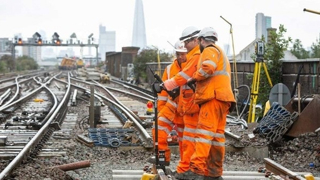
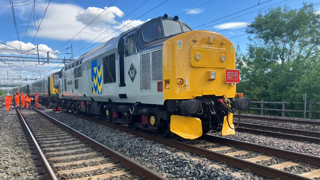

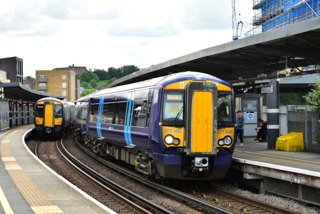
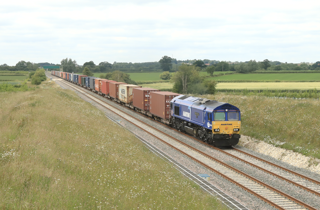










Login to comment
Comments
No comments have been made yet.